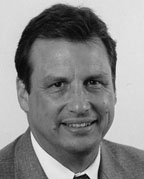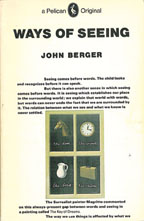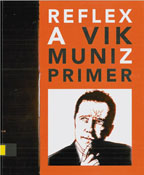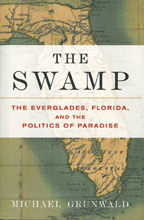« Art Critics' Reading List
PETER BOSWELL
|
Peter Boswell has been Assistant Director for Programs/Senior Curator at the Miami Art Museum since 1999. Prior to the Miami Art Museum, Boswell served as Heiskell Arts Director at the American Academy in Rome (1996-1999) and as a curator at the Walker Art Center in Minneapolis (1986-1996). He has a B.A. from the University of California, Berkeley, and an M.A. in Art History from Stanford University. He has curated many exhibitions, including “Vik Muniz: Reflex”(2006, MAM), “2000 BC: The Bruce Conner Story, Part II” (1999, Walker, with Bruce Jenkins and Joan Rothfuss), “The Photomontages of Hannah Höch” (1996, Walker, with Maria Makela), and “Krzyzstof Wodizcko: Public Address” (1992, Walker), all of which toured. |
|
|
John Berger, Ways of Seeing. Hammondsworth, Middleses, Enland. British Broadcasting Corporation and Penguin Books, Ltd., 1972
The first book that I can remember having a serious impact on my thinking about art was John Berger’s Ways of Seeing. I read it in the early 1970s, soon after it was published, and Berger was challenging the very art history I was studying in classes. He took on the role of provocateur rather than authority: “None of the essays pretends to deal with more than certain aspects of each subject… Our principal aim has been to start a process of questioning.” He concluded the book with the phrase “To be continued by the reader…”
I can remember how radical the book looked when it first came out, how the text began on the cover, the emphatic nature of the Monophoto Univers typephase, and the equal treatment of high art with popular culture. With this slim volume, Berger broke down hierarchies, offered new perspectives, and gave me permission to think for myself. |
|
|
Vik Muniz. Reflex: A Vik Muniz Primer. New York: Aperture Foundation, 2005.
I organized a Vik Muniz survey exhibition that traveled throughout North America in 2006 and 2007. Rather than publishing a catalogue of the show, we elected to join with the Aperture Foundation on a Vik Muniz book project that they had already initiated. While at first I was disappointed not to be publishing a free-standing catalogue, I checked my ego once I read the galleys. Muniz is at least as gifted a writer as he is an artist, and the book is probably better than anything I or anyone else could have written about him. It is at once entertaining, witty, insightful, and instructive. At heart it is about how images are made and read. A self-taught polymath, Muniz follows his curiosity in an astonishing variety of directions and disciplines. What animates the book is his lively intelligence and his fascination with the magic of the flickering, transformative moment when material becomes illusion. |
|
|
Michael Grunwald. The Swamp: The Everglades, Florida, and the Politics of Paradise. New York: Simon and Schuster, 2006.
In 2006, MAM commissioned and subsequently acquired an installation by Mark Dion, South Florida Wildlife Rescue Unit, which examines the short history of man’s involvement with the Everglades, culminating in the invention of a fictive government agency—an environmental SWAT team—that swoops in on lands slated for development. Dion used Grunwald’s book as one of his sources. It provides a remarkably fair-minded look at the human history of the Everglades. Particularly engaging is his tracing of the evolving notion of conservation. How early on it meant the transformation of a useless, noxious swamp into an agricultural paradise; then how preservationists quickly realized the devastating toll this process was having on the entire eco-system; and ultimately how “restoration” has become the key to the region’s survival. Miami’s thriving art world is as vulnerable as any bird hatchery, and its survival is equally dependent on how the dynamic between development and restoration plays out. |
|






































